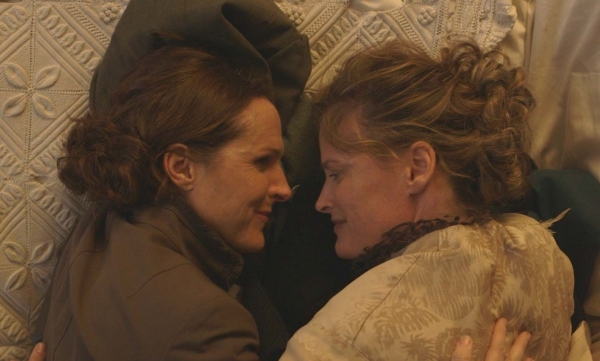BRATTLEBORO — Give a big hand to Molly Shannon, whose just-below-the-surface comedic style puts a face to Emily Dickinson not yet seen on the big screen in Wild Nights with Emily. Seasoned to a tee, she steals this show.
Better yet, give a shout out to filmmaker and director Madeleine Olnek, who has fleshed out a credible romantic-friendship narrative for Emily Dickinson and her dearest confidant and sister-in-law, Susan Dickinson, strategically married to brother Austin.
Emily Dickinson, poet. Emily Dickinson, lesbian?
The mid-19th-century Massachusetts poet has invited fascination and thoughtful pause for academics, poets, and lovers of literature all over the world ever since her work was pulled out of obscurity after her death.
Only a very few of Dickinson's poems were published during her lifetime, with much editing and a battle over style with the male editors who ruled at the time.
Wild Nights with Emily is less a strictly fact-based biopic than it is a delightful not-entirely-linear dramedy where, in her immediate spheres, Dickinson is shown not to be an obtuse and silent bedroom dweller but a passionate woman devoted to her muse, the love of her life.
Another recent and critically acclaimed Dickinson film, A Quiet Passion, starring Cynthia Nixon, was a bit dull, even if a perhaps more commonly accepted telling of the poet's life. Interestingly, the director of that film was Terence Davies, a British male. This is not that film or that character.
* * *
The story is framed by the voice of Mabel Todd, a Dickinson family-friend-of-a-type who first edited (or, rather, crushed and reformulated text) and worked along with mutual friend Thomas Higginson to publish the poet's work four years after her death.
Letters and poems on recipes and other bits and pieces also exist and are featured highlights in the film, at one point being pulled out of Emily's skirts and hair to throw at Susan. In a few of these written works, some quite intimate, the name “Sam” was substituted for the erased “Sue.” Thus begins the premise of Olnek's film.
The film darts between Emily and Susan as adults and as young teens. An initial scene shows the girls kissing in the Dickinson family living room, establishing their close bond as they giggle and fall to the ground together.
The bulk of the film follows the Dickinson family trajectory, highs and lows, births and deaths, rejections and successes. Memorable family members are cat-obsessed sister Lavinia and insightful and slightly snarky niece Martha.
Featured scenes include some nifty yet light bedroom sequences between Susan and Emily, most incredibly dealing with the bulky clothing of the day. Once Emily began wearing her notorious white dress, it was impossible to distinguish between underclothing and the dress itself.
Susan Dickinson as an adult is played without fanfare or embellishment by Susan Ziegler. Other strong actors include Amy Seimetz as Mabel, Brett Gelman as Higginson, and Jackie Monahan as adult Lavinia.
Olnek, who premiered the film at the South by Southwest Film Festival in March, received raves for a work that can be described as feminist, lesbian, quirky, softly savage, appropriately discombobulated, and just plain fun.
